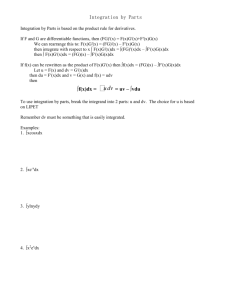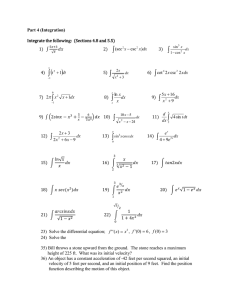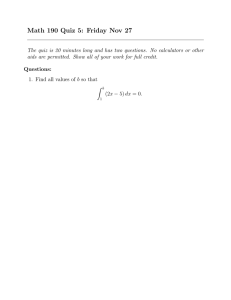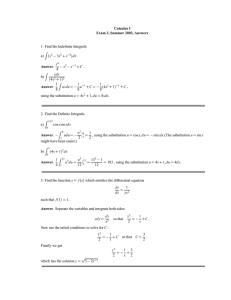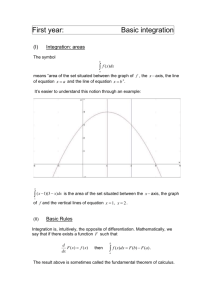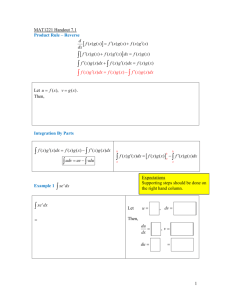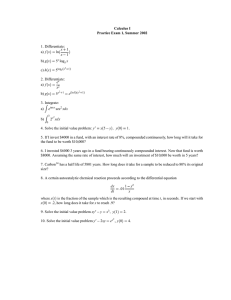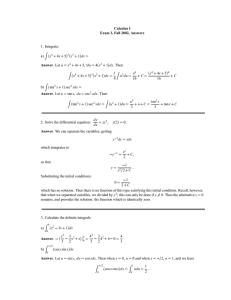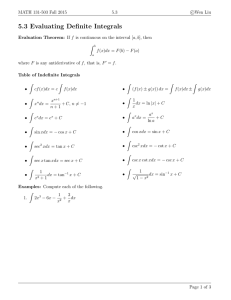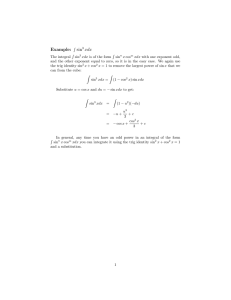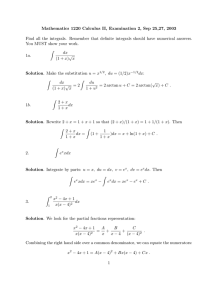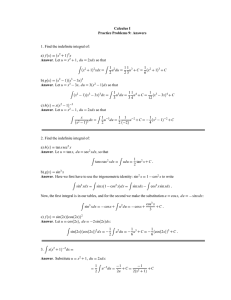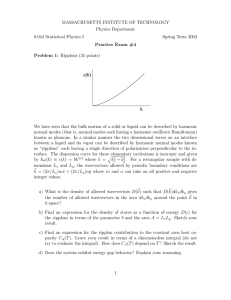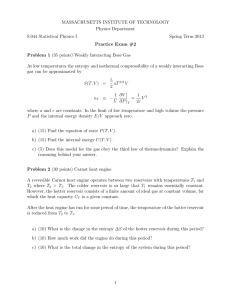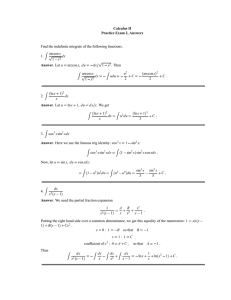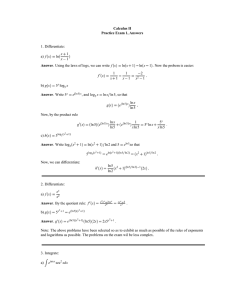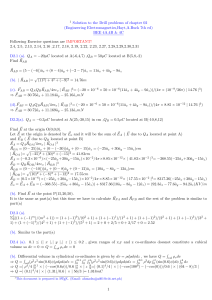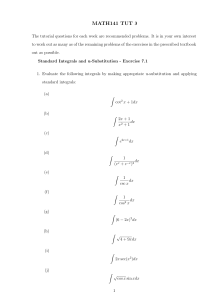Math 1210-90 Calculus I Examination 3 Answers
advertisement
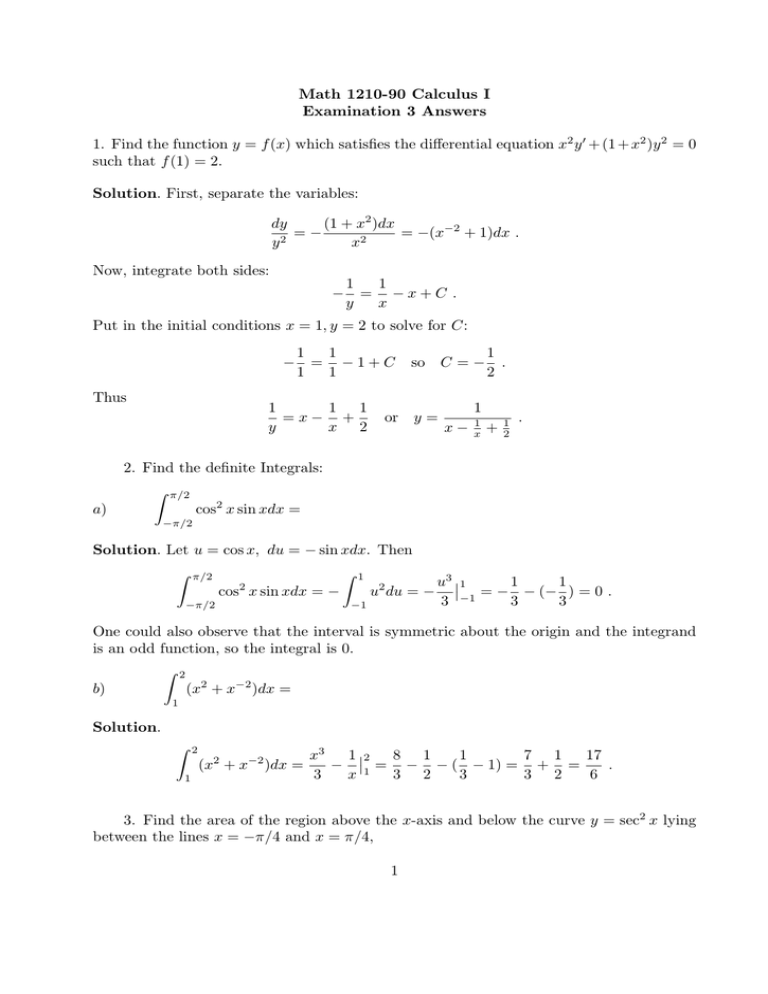
Math 1210-90 Calculus I Examination 3 Answers 1. Find the function y = f (x) which satisfies the differential equation x2 y 0 + (1 + x2 )y 2 = 0 such that f (1) = 2. Solution. First, separate the variables: (1 + x2 )dx dy = − = −(x−2 + 1)dx . y2 x2 Now, integrate both sides: − 1 1 = −x+C . y x Put in the initial conditions x = 1, y = 2 to solve for C: − Thus 1 1 = −1+C 1 1 1 1 1 =x− + y x 2 C=− so or y = 1 . 2 1 x− 1 x + 1 2 . 2. Find the definite Integrals: Z π/2 cos2 x sin xdx = a) −π/2 Solution. Let u = cos x, du = − sin xdx. Then Z π/2 2 Z 1 cos x sin xdx = − −π/2 u2 du = − −1 u3 1 1 1 = − − (− ) = 0 . −1 3 3 3 One could also observe that the interval is symmetric about the origin and the integrand is an odd function, so the integral is 0. Z 2 b) (x2 + x−2 )dx = 1 Solution. Z 1 2 (x2 + x−2 )dx = x3 1 2 8 1 1 7 1 17 . − 1 = − − ( − 1) = + = 3 x 3 2 3 3 2 6 3. Find the area of the region above the x-axis and below the curve y = sec2 x lying between the lines x = −π/4 and x = π/4, 1 Solution. This is the integral π/4 Z −π/4 π/4 sec2 xdx = tan x−pi/4 = 1 − (−1) = 2 . 4. The region in the first quadrant between the coordinate axes and the curve y = 1 − x2/3 is rotated about the y-axis. Find the volume of the resulting solid. Solution. Sweep the volume out in the y direction, usng the method of discs. Then dV = πx2 dy, and (solving for x in terms of y), x = (1 − y)3/2 . The volume then is 1 Z 0 Z (1 − y)dy = −π π 0 udu = −π 1 u2 0 π = . 1 2 2 If instead, we sweep out in the x direction, we must use the shell method. Here dV = 2πx(1 − x2/3 )dx = 2π(x − x5/3 )dx, and the volume is Z 1 (x − x5/3 )dx = 2π( 0 1 x2 3 1 3 π − x8/3 )0 = 2π( − ) = . 2 8 2 8 2 5. The region bounded by the x-axis and the curve y = 2x − x2 is rotated about the x-axis. Find the volume of the resulting solid. Solution. Here we use the method of discs, integrating in the x direction. dV = π(2x − x2 )2 dx, so the volume is Z π 2 2 2 Z (2x−x ) dx = π 0 0 2 4 x5 2 4 8 56π . (4x2 −4x3 +x4 )dx = π( x3 −x4 + )0 = 4π( −2+ ) = 3 5 3 5 15 2
